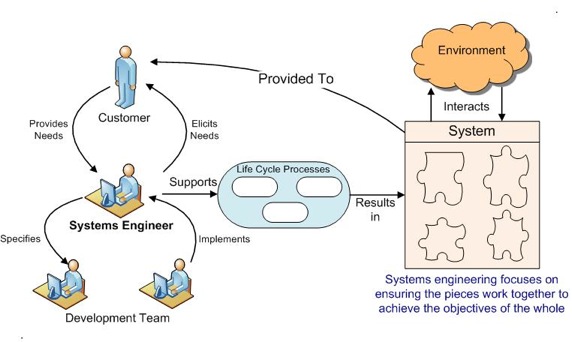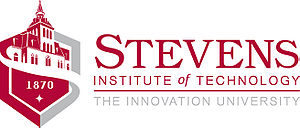Guide to the Systems Engineering Body of Knowledge (SEBoK)
<html> <meta name="citation_title" content="Guide to the Systems Engineering Body of Knowledge (SEBoK)"> <meta name="citation_editor" content="Pyster, Art"> <meta name="citation_editor" content="Olwell, David"> <meta name="citation_editor" content="Anthony, James"> <meta name="citation_editor" content="Enck, Stephanie"> <meta name="citation_editor" content="Henry, Devanandham"> <meta name="citation_editor" content="Hutchison, Nicole"> <meta name="citation_publication_date" content="2012/9/15"> <meta name="citation_volume" content="1.0"> <meta name="citation_journal_title" content="Systems Engineering Body of Knowledge"> </html> Edited by Art Pyster, David Olwell, James Anthony, Stephanie Enck, Devanandham Henry, and Nicole Hutchison.
Systems engineering is an interdisciplinary approach and means to enable the realization of successful systems. Successful systems must satisfy the needs of its customers, users and other stakeholders. Some key elements of systems engineering are highlighted in Figure 1 and include:
- The principles and concepts that characterize a system, where a system is an interacting combination of system elements to accomplish a defined objective(s). The system interacts with its environment that may include other systems, users, and the natural environment. The system elements that compose the system may include hardware, software, firmware, people, information, techniques, facilities, services, and other support elements.
- A systems engineer is a person or role who supports this interdisciplinary approach. In particular, the systems engineer often serves to elicit and translate customer needs into specifications that can be realized by the system development team
- In order to help realize successful systems, the systems engineer supports a set of life cycle processes beginning early in conceptual design and continuing throughout the life cycle of the system through its manufacture, deployment, use and disposal. The systems engineer must analyze, specify, design, and verify the system to ensure that its functional, interface, performance, physical, and other quality characteristics, and cost are balanced to meet the needs of the system.
- A system engineer helps ensure the elements of the system fit together to accomplish the objectives of the whole, and ultimately satisfy the needs of the customers and other stakeholders who will acquire and use the system
Comments from 0.5 wiki
No comments were logged for this article in the SEBoK 0.5 wiki. Please provide your general impressions and any overview comments on SEBok 0.75 below.
SEBoK Discussion
Please provide your comments and feedback on the SEBoK below. You will need to log in to DISQUS using an existing account (e.g. Yahoo, Google, Facebook, Twitter, etc.) or create a DISQUS account. Simply type your comment in the text field below and DISQUS will guide you through the login or registration steps. Feedback will be archived and used for future updates to the SEBoK. If you provided a comment that is no longer listed, that comment has been adjudicated. You can view adjudication for comments submitted prior to SEBoK v. 1.0 at SEBoK Review and Adjudication. Later comments are addressed and changes are summarized in the Letter from the Editor and Acknowledgements and Release History.
If you would like to provide edits on this article, recommend new content, or make comments on the SEBoK as a whole, please see the SEBoK Sandbox.
blog comments powered by Disqus



